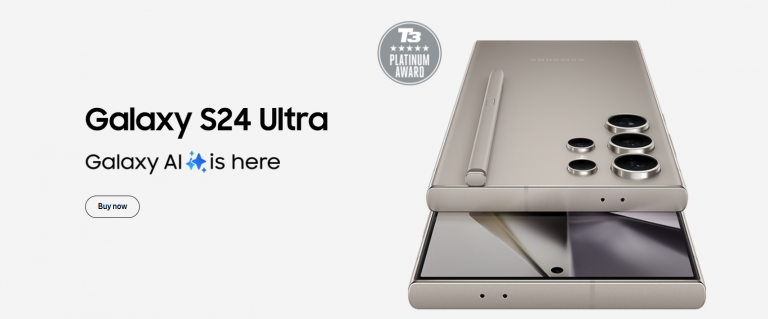Introduction
Smartphones have become an integral part of our daily lives, and the debate between flagship and budget devices continues to captivate consumers. In this era of rapid technological advancement, understanding the intricacies of smartphone performance is crucial. The following analysis delves into the power play between flagship and budget smartphones, shedding light on the key factors that drive their performance.
Understanding Performance Metrics
When it comes to assessing smartphone performance, several key metrics come into play. The processing power of a device, measured in gigahertz (GHz), and the Random Access Memory (RAM) are among the primary indicators. These metrics collectively determine how efficiently a smartphone can handle various tasks, from running apps to multitasking.
Flagship Smartphones: Power Unleashed
Flagship smartphones are the epitome of technological prowess. Equipped with cutting-edge processors boasting multiple cores and high-speed clock rates, these devices can handle the most demanding applications with ease. The substantial RAM capacity further ensures seamless multitasking, allowing users to switch between apps effortlessly. Examples such as the latest models from renowned brands stand as testimony to the unparalleled performance offered by flagship devices.
Budget Smartphones: More Bang for the Buck?
Contrary to popular belief, budget smartphones are no slouches in the performance department. While they may not boast the latest and most powerful processors, they often incorporate cost-effective components that deliver commendable performance. Real-world case studies reveal instances where budget smartphones have surprised users with their ability to handle everyday tasks efficiently.

Real-world Performance Testing
Benchmark scores only tell part of the story. Real-world performance is equally—if not more—important. Flagship and budget smartphones may have similar benchmark scores, but it’s the day-to-day use that truly showcases their capabilities. In scenarios like opening multiple apps simultaneously or running graphics-intensive games, the difference in performance becomes more apparent.
Benchmarking Showdown
Benchmarking tools provide a standardized way to compare smartphones. However, it’s crucial to interpret these scores in the context of real-world use. In a head-to-head benchmarking showdown, flagship smartphones often secure higher scores, reflecting their superior hardware capabilities. Yet, the question remains whether these scores translate to a noticeable difference in daily usage.
User Experience Matters
Beyond raw performance metrics, the user experience is paramount. A flagship phone might excel in benchmark tests, but if it stutters in everyday tasks, the user experience is compromised. Smooth performance, intuitive interfaces, and seamless transitions contribute significantly to user satisfaction, often making the overall experience more enjoyable.
The Price-Performance Ratio
The price-performance ratio is a critical factor in the decision-making process. While flagship smartphones deliver top-notch performance, they come at a premium price. On the other hand, budget smartphones offer a more economical option, and for many users, the slightly lower performance is a trade-off they are willing to make for substantial savings.
Future-Proofing: Can Budget Phones Keep Up?
The longevity of a smartphone is a concern for many users. Flagship devices tend to receive software updates for a more extended period, ensuring compatibility with the latest apps and features. Budget smartphones, while initially performing admirably, might face challenges in keeping up with future software demands, potentially limiting their lifespan.
Unique Features and Trade-offs
Flagship smartphones often come with unique features, such as advanced camera systems, high-resolution displays, and innovative technologies. However, these features may come at the expense of other factors like battery life or durability. Budget smartphones, while lacking some of these high-end features, often strike a balance that aligns with the essential needs of the average user.

Consumer Trends and Preferences
Consumer preferences play a pivotal role in the power play between flagship and budget smartphones. Trends indicate a growing demand for affordable devices that offer a good balance of performance and features. With the increasing competition in the budget segment, manufacturers are compelled to deliver better performance at lower price points.
The Impact of Brand Reputation
Brand reputation heavily influences consumer choices. Established brands known for their commitment to quality and performance often sway consumers towards their flagship offerings. However, emerging brands that focus on providing value for money in the budget segment are gaining traction, challenging the dominance of traditional giants.
Environmental Considerations
In addition to performance considerations, consumers are becoming more conscious of the environmental impact of their choices. Flagship smartphones, with their premium materials and production processes, often have a larger ecological footprint. Budget smartphones, designed with cost-effectiveness in mind, might be more sustainable options for environmentally conscious consumers.
The Role of Operating Systems
The choice between Android and iOS adds another layer to the performance debate. While flagship devices from both ecosystems showcase impressive performance, the optimization of hardware and software integration differs. Some users prefer the customizable nature of Android, while others value the seamless experience offered by the iOS ecosystem.
Conclusion
In the ever-evolving landscape of smartphones, the power play between flagship and budget devices continues to unfold. For users seeking the pinnacle of performance and cutting-edge features, flagship smartphones remain the obvious choice. However, the gap between flagship and budget devices is narrowing, with budget smartphones offering commendable performance at a fraction of the cost. Ultimately, the ideal choice depends on individual priorities, budget constraints, and the importance placed on specific features.
Frequently Asked Questions (FAQs)
- Q: Are flagship smartphones really worth the higher price tag in terms of performance?
- A: Flagship smartphones often deliver superior performance and features, but whether they are worth the higher price depends on individual preferences and budget considerations.
- Q: Can budget smartphones keep up with the latest software updates and applications?
- A: While budget smartphones may face challenges in keeping up with future software demands, many manufacturers are making strides to provide consistent updates for their budget-friendly devices.
- Q: How important is the user experience in determining the overall performance of a smartphone?
- A: The user experience is crucial; even if a smartphone has high benchmark scores, a smooth and enjoyable user experience in daily tasks is equally important.
- Q: What role does brand reputation play in the choice between flagship and budget smartphones?
- A: Brand reputation influences consumer choices, with established brands often associated with premium performance, while emerging brands focus on providing value for money in the budget segment.
- Q: Are there any environmental considerations when choosing between flagship and budget smartphones?
- A: Yes, flagship smartphones, with their premium materials and production processes, often have a larger environmental impact. Budget smartphones, designed with cost-effectiveness in mind, might be more sustainable options.










+ There are no comments
Add yours